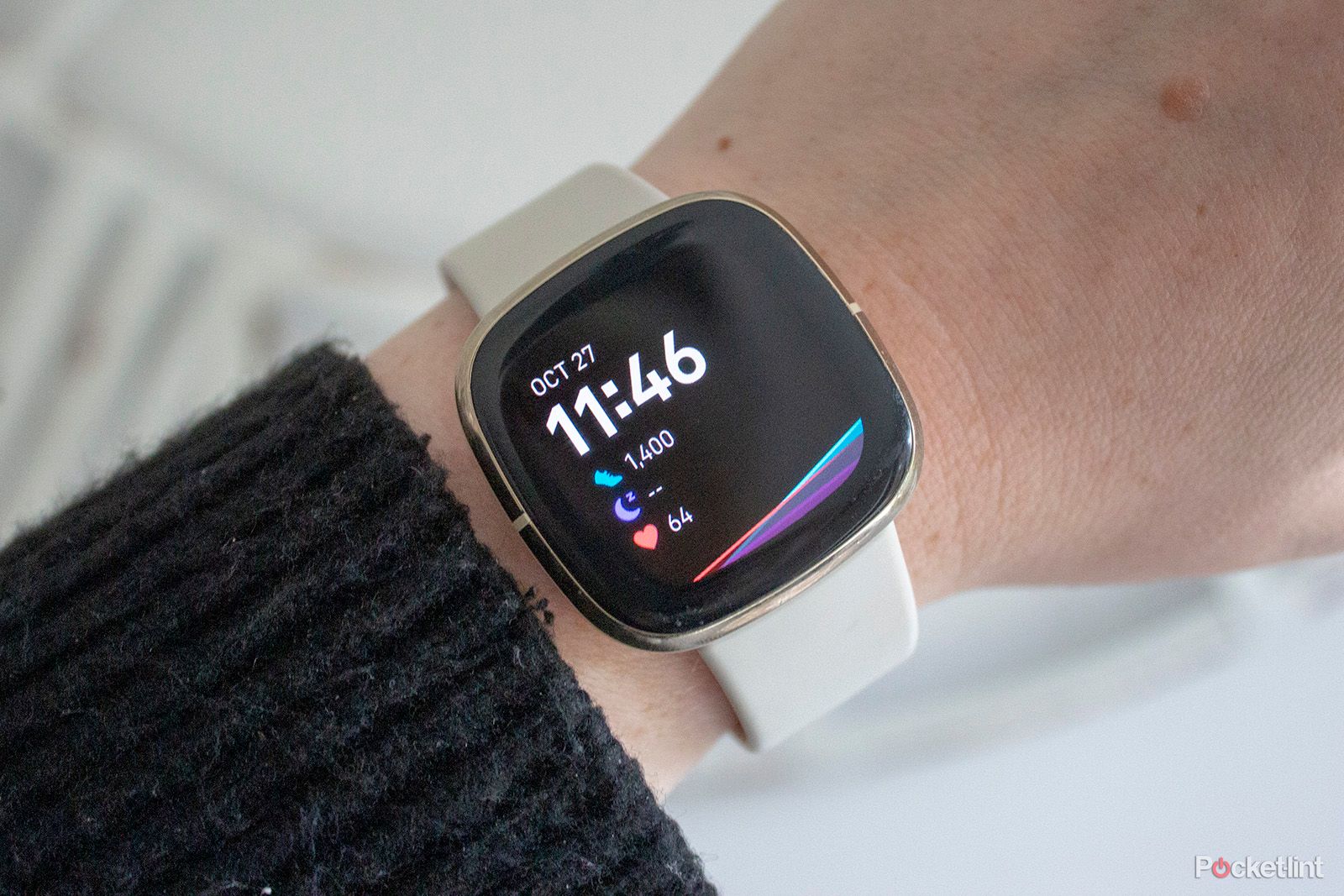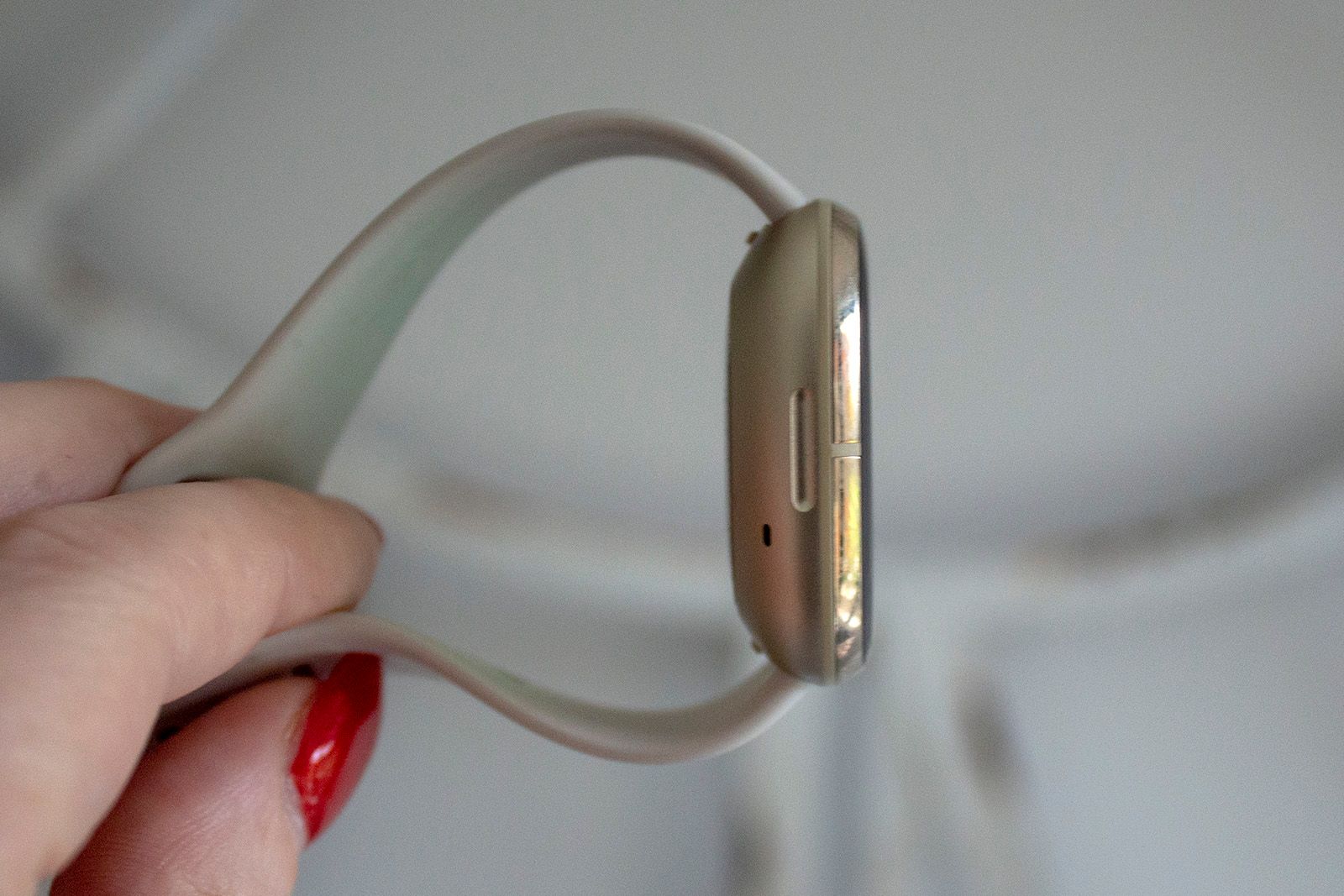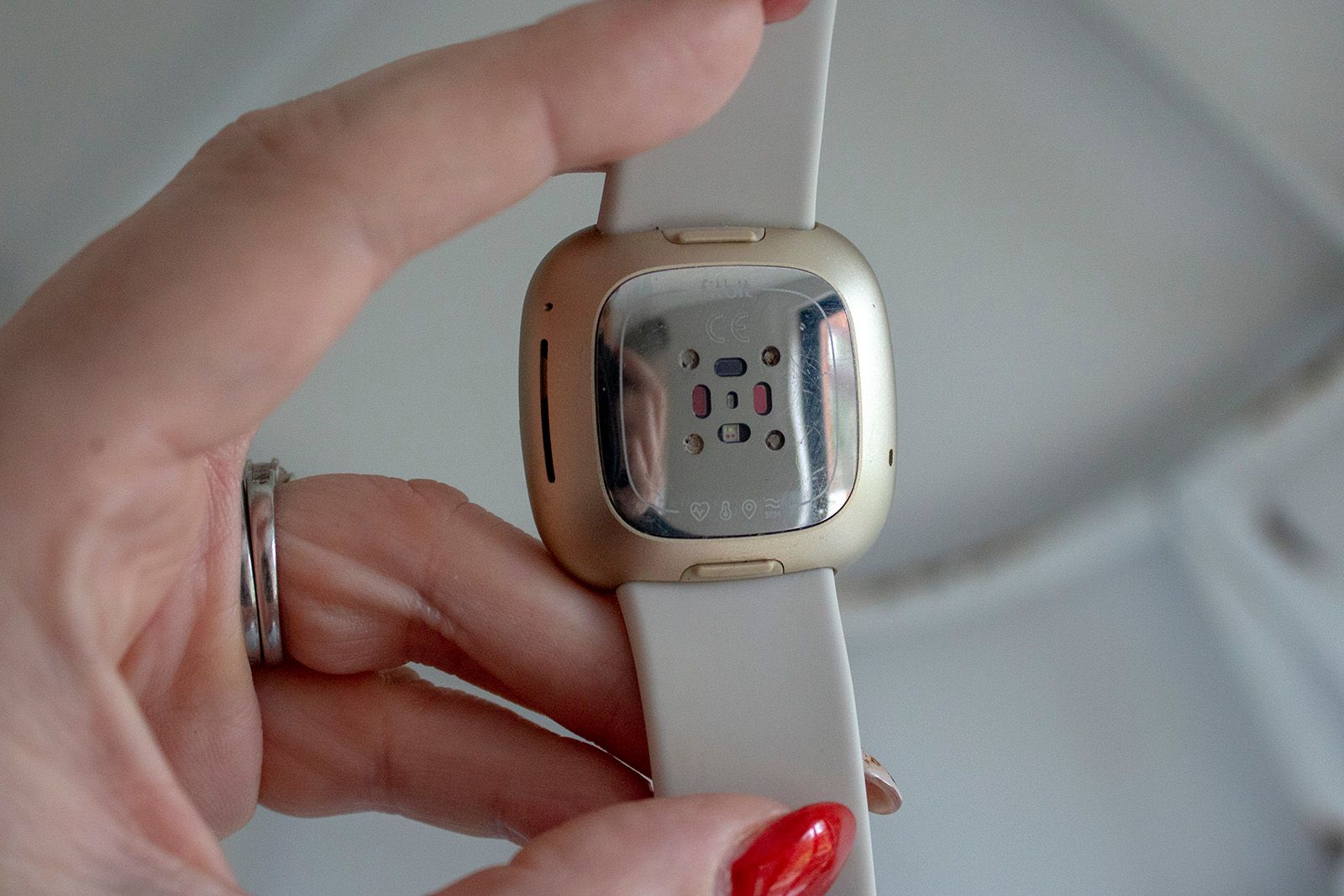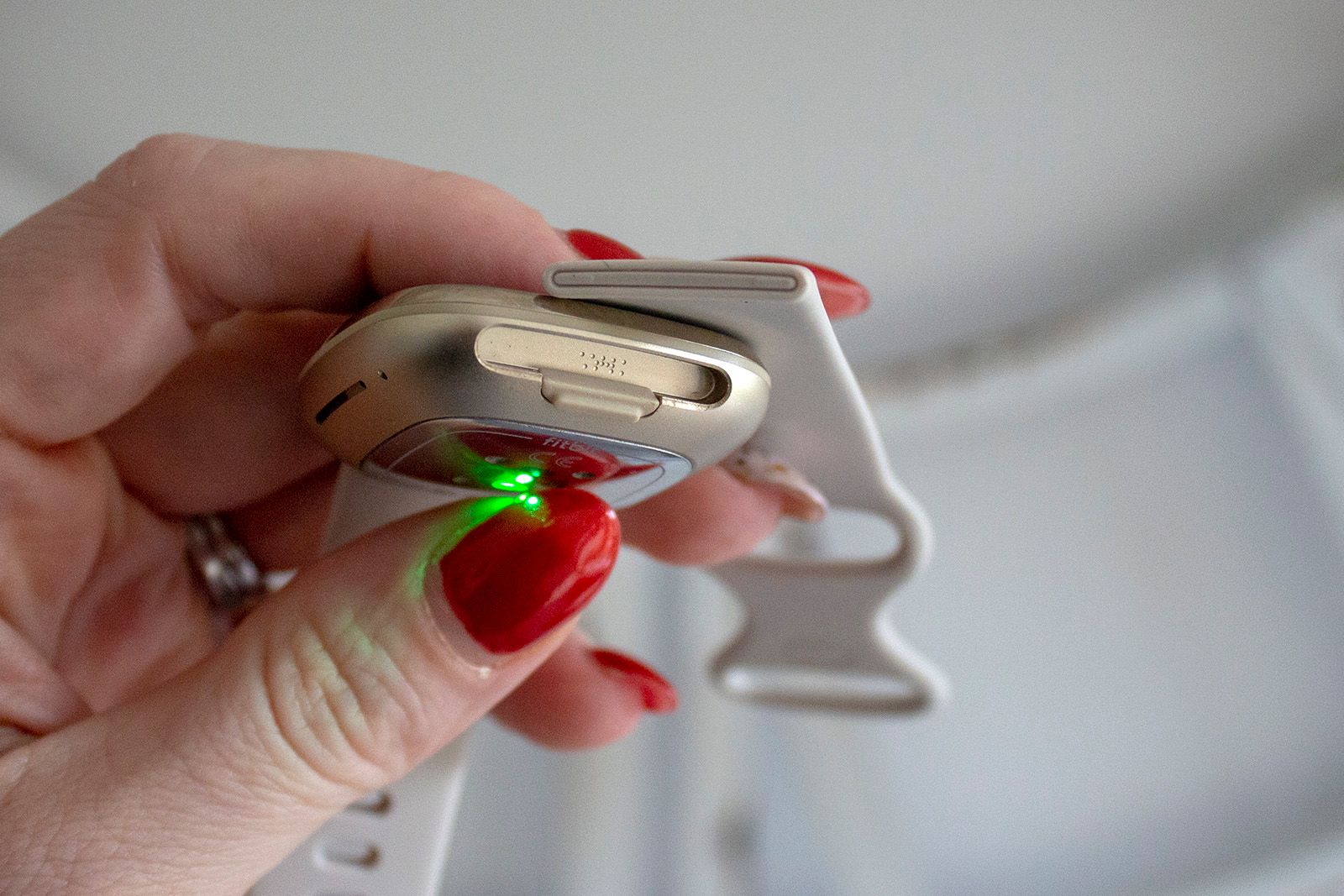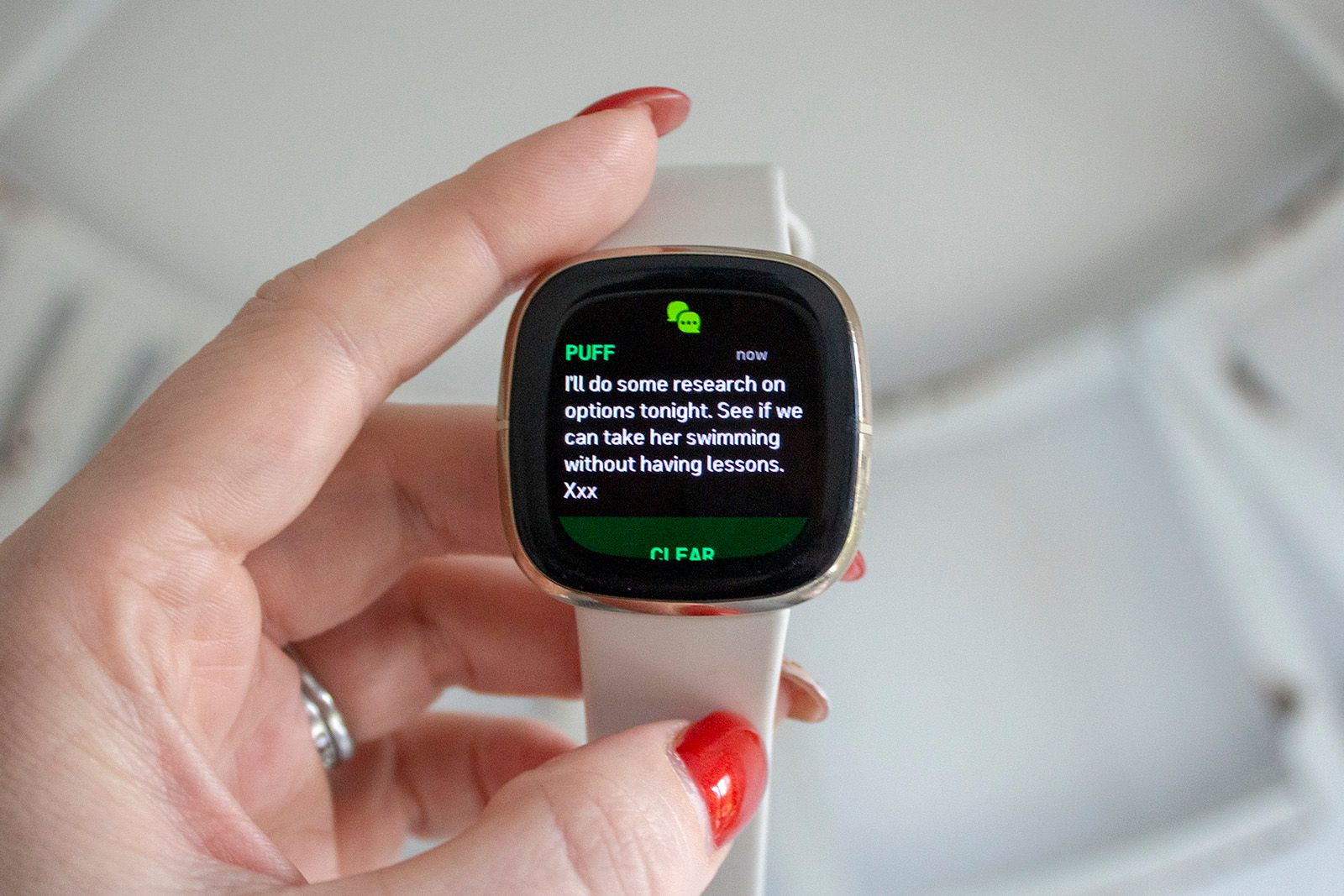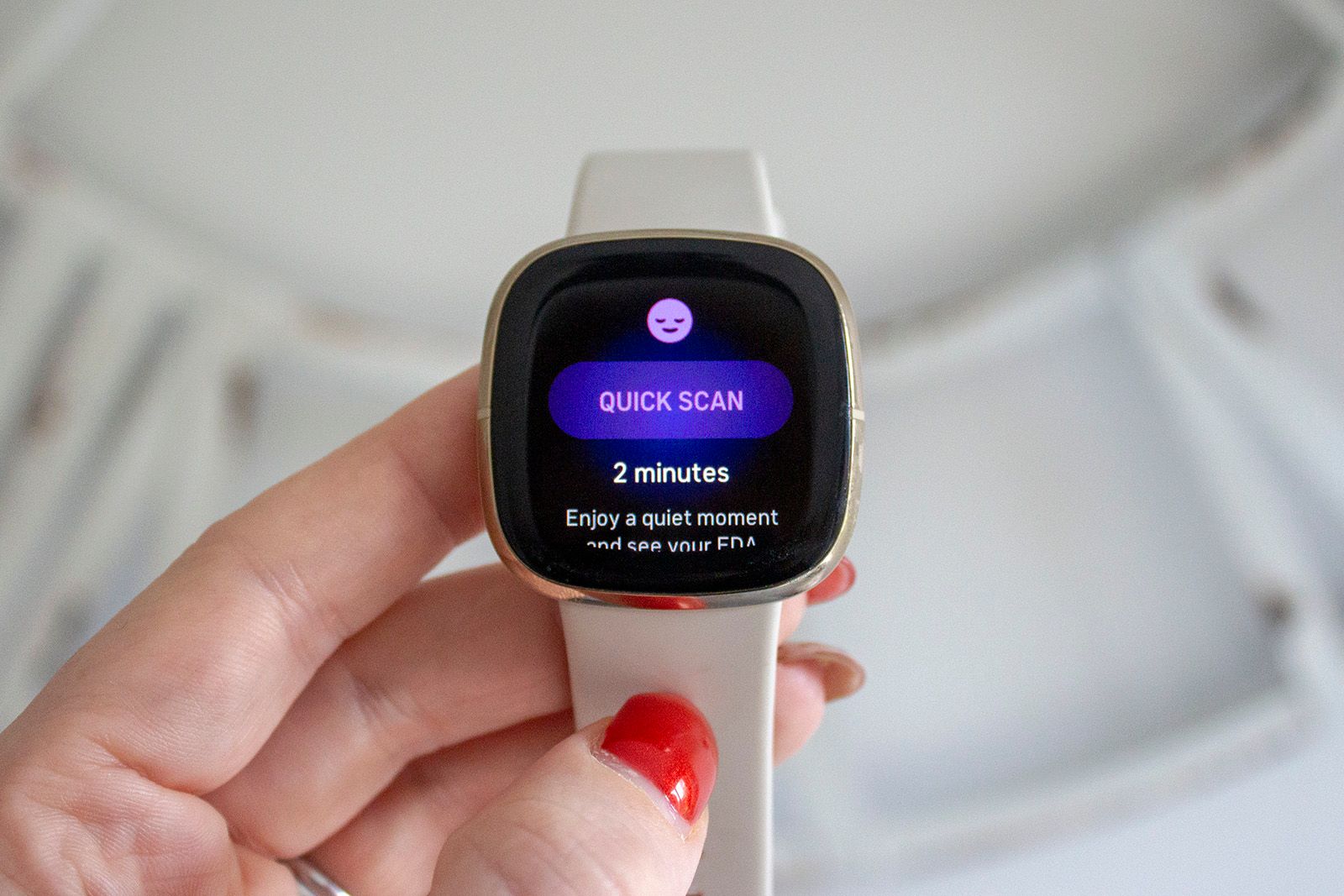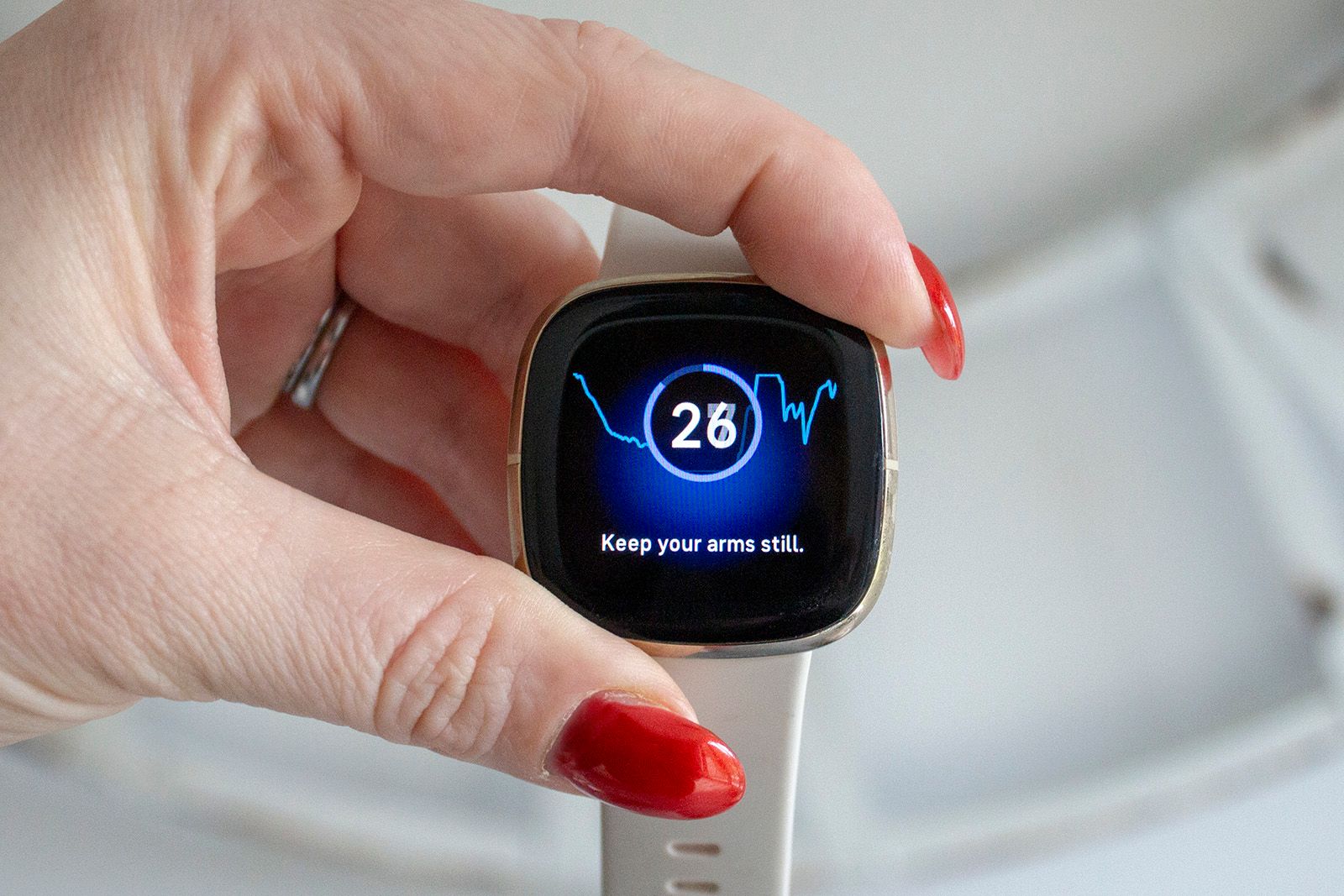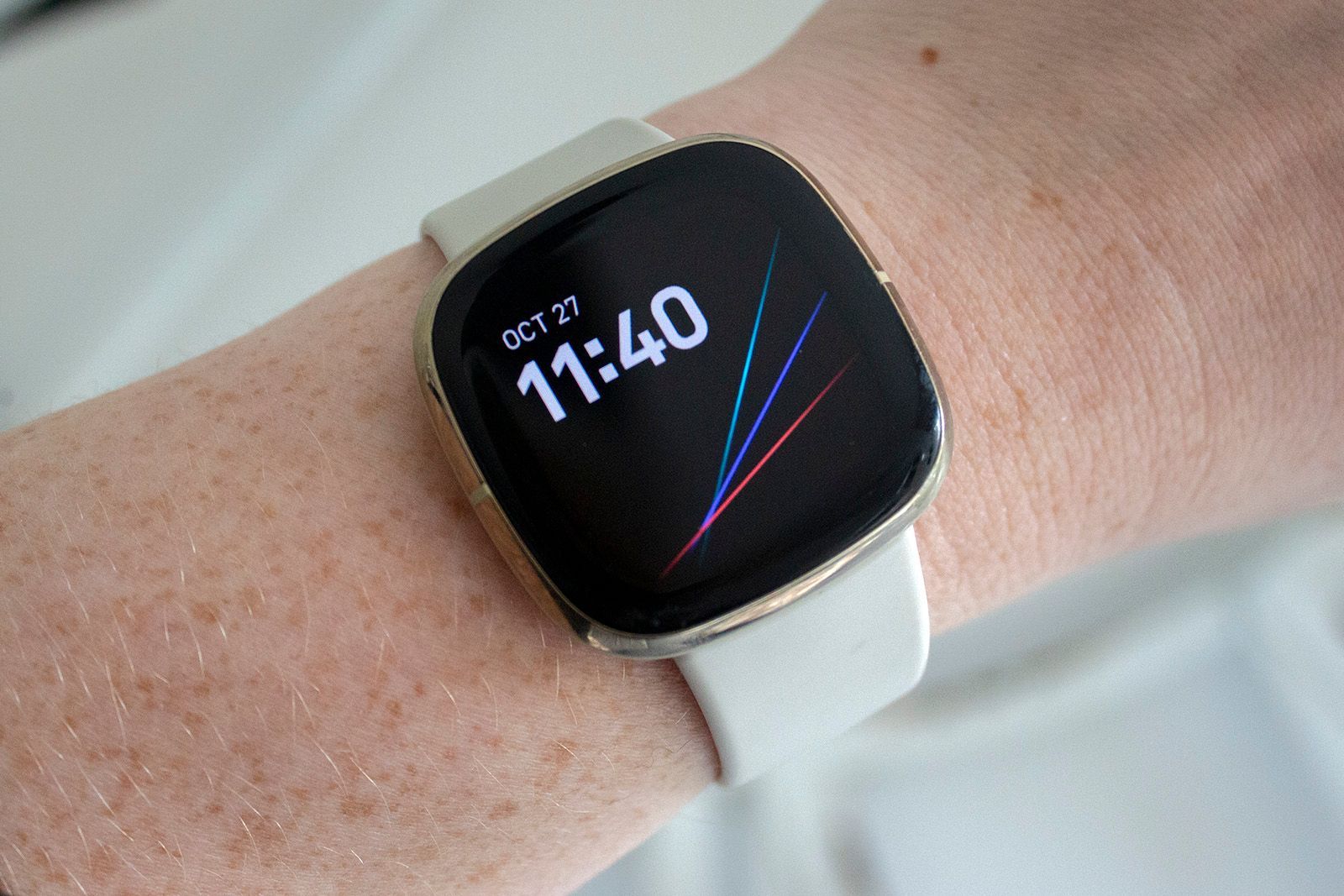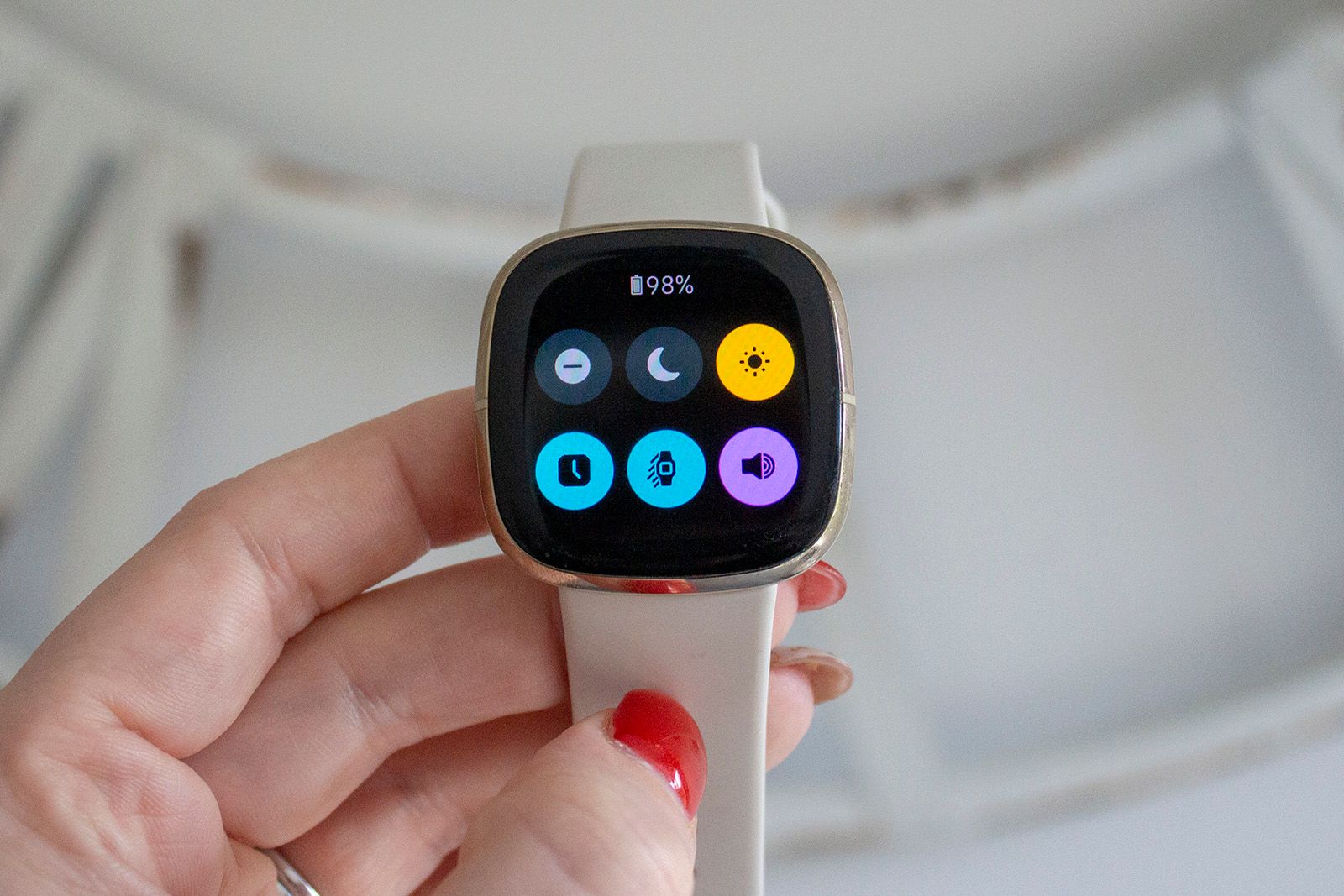The Fitbit Sense is the company's top-of-the-range smartwatch, competing with the likes of the Apple Watch and Samsung Galaxy Watch devices, but with a stronger focus on health.
Offering a lovely premium design, coupled with some unique stress management tools - as well as features like the ability to take an electrocardiogram (ECG), and a skin temperature sensor - is the Fitbit Sense worth its price tag?
Our quick take
The Fitbit Sense has a premium and solid design, a great display, and it comes packed full of health features, while also delivering brilliant battery life.
Sleep tracking, general activity tracking, and the health data that the Sense offers are great, but its interface is slow to respond, and as a smartwatch it's pretty useless - especially for Apple users. Some of its health features are also locked behind the Fitbit Premium subscription, making it a pricey device.
If you're specifically in the market for a watch to help monitor your health - and you're happy to pay the monthly subscription for the extra insights - then the Sense is a really great device with so much data on offer. But if you're in the market for a smartwatch or fitness watch in general then the Sense is currently outshone by its competitors.
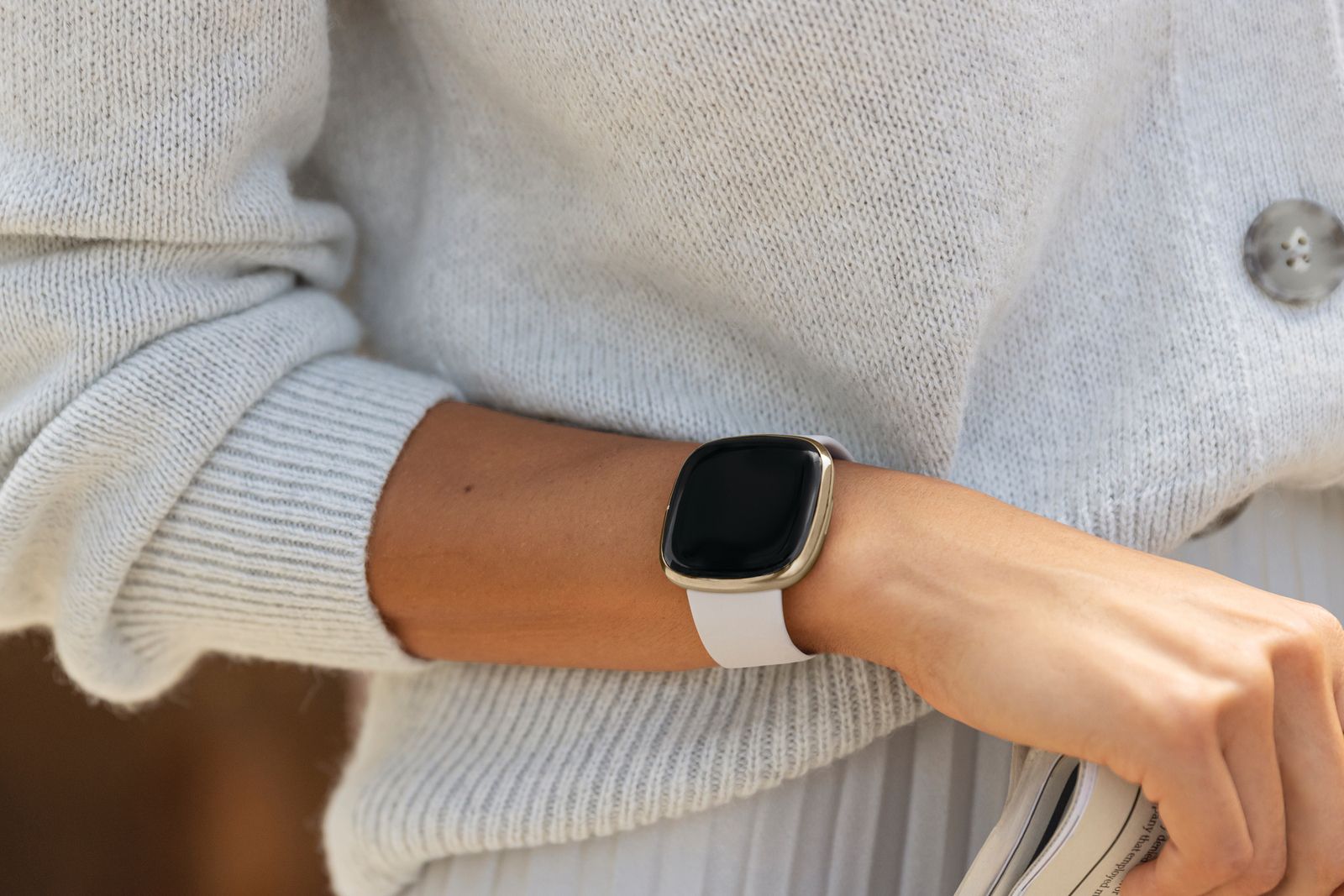
Fitbit Sense
The Fitbit Sense offers more features than the Versa 3, such as an EDA sensor, skin temperature sensor and the ability to take an ECG.
- Solid and premium design
- Lovely vibrant display
- Easy to use
- Fitbit app is brilliant
- Good accessory collection
- Great sleep tracking
- Spotify support
- Great health features
- Heart-rate sensor slow to respond
- Smartphone notifications pointless
- No Google Assistant yet
- Limited third-party app support
- Fitbit Pay support from banks is minimal
- Lots of features locked behind Fitbit Premium
Design & Display
- Carbon/Graphite, Lunar White/Soft Gold
- Water resistant to 50m (5ATM)
- Stainless steel design
The Fitbit Sense has a design that's pretty much identical to the Versa 3, offering a more premium and softer visual approach compared to the older Versa smartwatches. The Sense's main body is square but it has rounded corners, rounded edges, and a curved back, with smoother lines than the older Versa 2.
There's a colourful AMOLED display - also with curved edges - that sits on top of a solid stainless steel body. A polished trim surrounds the display, while the rest of the body has a brushed finish.
We like the two-tone finish as it makes the Fitbit Sense a little different. With the Apple Watch, you either get the polished look in the stainless steel models, or you get the brushed look in the aluminium models.
The Fitbit's touchscreen display is lovely, with rich colours and plenty of vibrancy, although it isn't as responsive as the Apple Watch. During our review time, we experienced quite a lot of lag and sluggishness with the interface not always registering a swipe.
On the underside of the Fitbit Sense is the heart-rate sensor, skin temperature sensor, speaker, and the buttons for changing the straps. There's also an inductive button to the left of the display - a little lower down than we would choose - which wakes the display up, turns the display off, or into Always On mode, while a long press takes you to a shortcut of your choice.
A silicone strap comes with the Fitbit Sense as standard, though there are others available to buy if you want to smarten it up. The silicone strap is comfortable, secure and easy to clean, even if the fastening is a little fussy and bulkier than we would like.
Features
- Built-in GPS
- Smartphone notifications
- Amazon Alexa/Google Assistant
- Electrodermal sensor (EDA)
- Skin temperature sensor
- Electrocardiogram (ECG)
The Fitbit Sense is packed full of features, though you might find you don't need or use some of them. It does the obvious things including smartphone notifications, sleep- and activity-tracking, automatic exercise tracking (for some exercises), and heart-rate tracking, as well as offering built-in GPS, swimproofing, and Amazon Alexa voice assistant (Google Assistant is due before the end of 2020).
There are a few extra features though, some of which are unique to the Sense and position it as more of a health watch than a smartwatch.
Like the Apple Watch Series 4, 5 and 6, as well as the Samsung Galaxy Watch Active 2 and Galaxy Watch 3, the Sense has the ability to take an ECG, as well as detect high and low heart rates above or below your threshold.
Unlike others, however, there's also a skin temperature sensor for detecting small variations to your body temperature. And the Fitbit Sense has an electrodermal (EDA) activity app on board too, designed to help you monitor your body's response to stress.
Fitness and smartwatch performance
As with all Fitbit devices, the sleep tracking and the data offered by the Sense - especially with Fitbit Premium - is excellent. The Sense is a little bulky to wear to bed in comparison to Fitbit's trackers but, overall, the sleep tracking on this device is great.
Smartphone notifications are very average though. If you have an Android device, you get Quick Replies - which offer a little more interaction - but Apple users won't get these. So while the notifications from calendar, messages and apps come through, there isn't much you can do with them, making the Sense a lot less useful than the Apple Watch in terms of a smartwatch. We also found that the "Active Call" notification didn't disappear after an incoming call had finished.
General activity tracking is good, but specific workout tracking isn't brilliant in our experience - though this does depend on the workout type you are doing. We do a lot of HIIT, which the Sense doesn't cope with very well. It took several minutes longer for the Sense to register a spike or reduction in our heart rate when training compared to the Apple Watch we were wearing on our other arm (the things we do for smartwatch testing, eh?).
The Sense is also better if selecting the standard "Workout" option rather than the more specific options - but the response time for heart rate is still much slower than we would like.
Health features performance
The Fitbit Sense is a better performer when it comes to its health features though. This is the main reason to buy into this system.
The skin temperature sensor data sits within the Health Metrics section of the Fitbit app, where you'll also find data on breathing rate, heart rate variability, and resting heart rate. It's probably data overload for most people if we're honest, but as it sits behind the Health Metrics section, you only really see it if you want to.
The various metrics can all contribute to helping you figure out if your body is experiencing stress or strain, or showing potential signs of illness, but Fitbit doesn't alert you to this if this happens. It gives you the data but you have to analyse it all yourself, making it less useful - although at least it's not guaranteed to turn you into a hypochondriac.
The EDA sensor is perhaps a little more useful though - and unique to the Sense. It contributes to the watch's ability to track stress. The Sense offers a daily stress score out of 100 - like the sleep score - made up of heart rate responsiveness, exertion balance, and sleep patterns. This means that while you may feel stressed mentally, the score is based on biological factors instead.
However, the breakdown can only be seen in Fitbit Premium - which is a pay-for service that we'll detail more in the Software section below.
To get a stress score, you have to wear the Sense for the majority of the day and to bed too. The EDA Scan app also makes up part of the Sense's ability to track and monitor stress. The EDA test is done on the Sense, while the data is found in the Mindfulness section of the Fitbit app. The two-minute test requires you to keep still, place your hand over the Sense's display - making sure you touch the metal frame - and wait for the vibration. After it's finished, you are encouraged to reflect on how you feel from a series of options: very stressed, stressed, neutral, calm, very calm.
The Fitbit app then allows you to see the results from the test in more detail, along with your heart data during the test. The more responses measured, the more stressed you're deemed to be. It's certainly interesting, though we aren't sure how accurate or useful it is as on days we felt stressed, we got quite a high score, suggesting that we weren't.
In terms of the ECG app - it's easy enough to perform an electrocardiogram using the Sense. You have to open the ECG app on the Sense and then place your thumb in the bottom left corner and your index finger in the top right corner - on the frame not the display - for 30 seconds. You'll then get a result - Normal Sinus Rhythm, Atrial Fibrillation or Inconclusive - and you can download this from the Fitbit app. It works in a very similar way to the Apple Watch, with your heart rate appearing on the Sense's display as the ECG is being performed.
Battery life
- 6 days without Always On display
- 2-3 days with Always On display
- Fast-charging on board
The Fitbit Sense has a great battery life in our experience - if you don't have the Always On display on. The battery life is reduced significantly when you have the Always On Display on - we got between two and three days - compared to between six and seven with it off. We like having the screen always on though, plus two to three days is still better innings than the Apple Watch.
Charging takes place with a dedicated charger that snaps onto the underside of the device. It's much better designed than the cradles that Fitbit uses on the likes of the Versa 2 and its fitness trackers. It will only fit one way - the lead comes out to the right of the display - but you get a very reassuring snap when it's in place and charging.
Fast-charging is on board too, which is very useful, especially if you want to wear the Sense to bed for sleep tracking. Fitbit claims you can get a full day's charge in 12 minutes, which we found to be pretty much accurate.
Software
- Fitbit app
- Fitbit Premium
- Support for Spotify
The Fitbit Sense runs on the same software as the Fitbit Versa smartwatches - so those who have had a Versa in the past will find the interface of the Sense familiar. Those who haven't will find it easy enough to use once you establish what gestures take you where. It's a little slow to respond but it gets there eventually.
A swipe down from the top of the home screen shows your notifications. A swipe up from the bottom gives you weather and core stats. A swipe right-to-left takes you to the apps, settings and things like weather and alarms. A swipe left-to-right takes you to quick settings.
Pressing-and-holding the inductive button on the left of the display will take you to your choice of feature, which you set by long-pressing the button and selecting the feature. Features include Amazon Alexa, Music Controls, Fitbit Pay, Exercise Shortcut, Find my Phone, Spotify, ECG, along with a number of others.
Third-party app support is still limited compared to the likes of the Apple Watch and Google Wear OS devices, but it's certainly improving with apps including Spotify and Deezer on board, for example.
In terms of the Fitbit app, it's the same experience as always, which for those new to the platform is a great one. It's a simple-to-use app with plenty of data broken down in a user-friendly format. You can read our Fitbit tips and tricks to find out more about the service.
There's also the option of subscribing to the Fitbit Premium service, which is a paid subscription service designed to enhance your Fitbit experience with more data and advanced insights that are more tailored to you. The Sense comes with six months free, but you have to pay for it after. You can read more about Fitbit Premium in our separate feature.
To recap
If you're specifically in the market for a watch to help monitor your health - and you're happy to pay the monthly subscription for the extra insights - then the Sense is a really great device with so much data. But if you're in the market for a smartwatch or fitness watch in general, however, the Fitbit Sense is currently outshone by its competitors.

